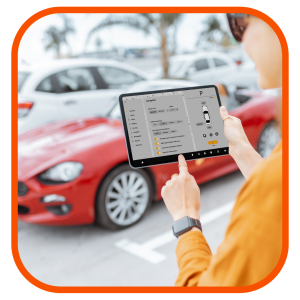Non-standard project for a client from the automotive industry

At locatheart, we don’t shy away from challenges or unusual tasks, and we invariably deliver highest-quality content, especially when our work is to influence a product’s user-friendliness – and that was precisely the case when we ran a project for a leading software developer in the automotive industry.
Read on to learn how we did it.
Challenges and objectives
Our client, developing software as well as producing and integrating systems for – among others – the automotive industry, wanted to localise their operating system into 13 languages:
The objective was to deliver an absolutely superb product and guarantee various recipient groups the highest level of usability. Translated messages as well as voice commands and on-screen texts had to be checked on the end device.
Step 1: Native speakers translate content into 13 languages
At the first stage of work, the project didn’t really differ from standard tasks we fulfil on a daily basis.
The client sent us a file containing rows with messages that were to appear on a screen of an in-vehicle infotainment system.
The file – along with requirements – was sent to linguists who localised it into their respective native tongues.
The specification of a screen integrated with an operating system meant a strict character limit. Yet another difficulty was the lack of context – one could not always check or deduce where and when a given message was supposed to appear. For this reason, it was necessary to verify the content on the end device.
Step 2: Verifying translations in their target environment
After we had delivered translations, we needed to verify them in their target environment – and it was precisely then that we had to employ some very non-standard solutions.
On an everyday basis, we use an internal database featuring over 4,000 linguists – translators and copywriters from all over the world.
The project, however, required us to find people locally – native speakers of different languages living in Poland who would meet highly specific criteria and be able to come to our client’s office in Krakow. What is more, according to our client’s wishes, we searched for people who weren’t necessarily professional translators, but who had hands-on experience with vehicles and were potential users of the end product.
As we didn’t manage to find native speakers of all the required languages in Poland, we had to invite them from abroad, which entailed additional logistic challenges.
We arranged transportation of those involved in the project from their hometowns to Krakow, and we took care of the board and lodging.
The verification process was non-stop monitored by our project manager who ensured that everyone was present at the time and place designated by the client.
Apart from checking whether the translations were displayed properly and matched the context, the participants shared their thoughts on the naturalness of the computer-generated voice reading the messages.
All remarks were written down by the client’s representatives and taken into account later on.
Conclusions
The project – combining our standard service, namely translation done by native speakers, with the organisation of 2-week-long verification of respective language versions in the target environment – was an exciting new challenge for us.
We’re always ready to implement non-standard solutions to help our clients cope with whatever difficulty they encounter.
